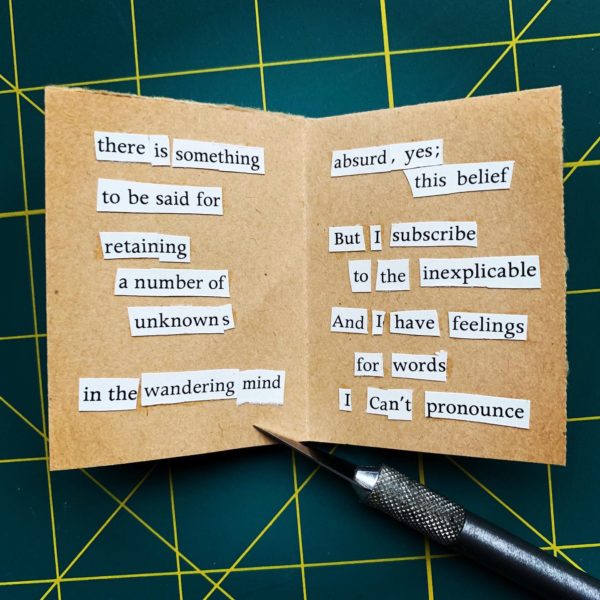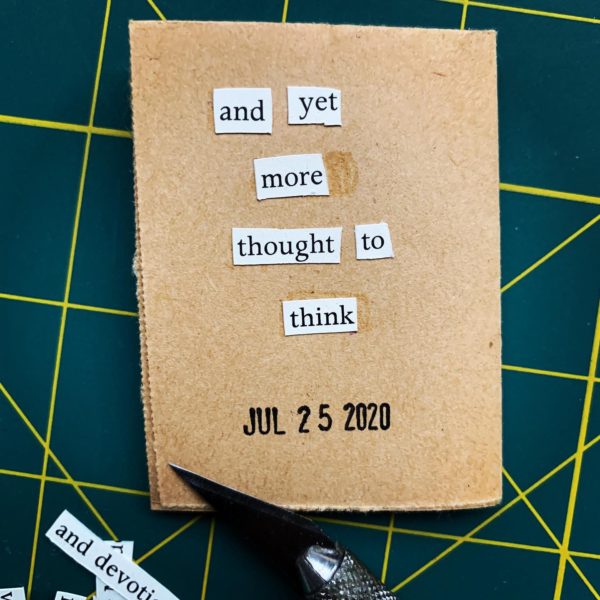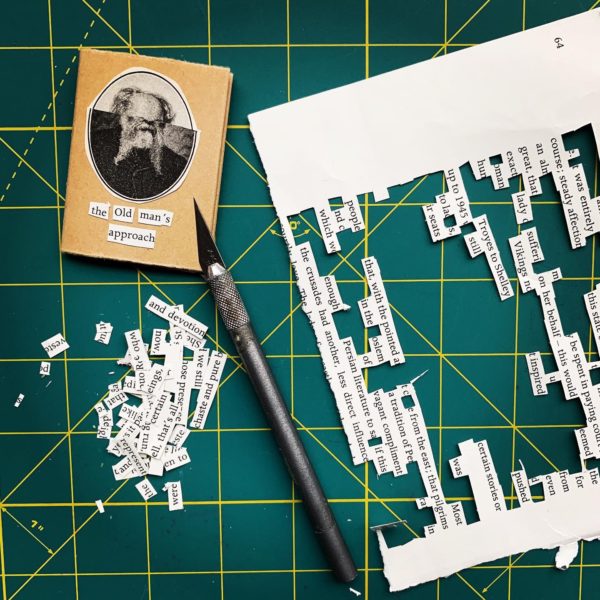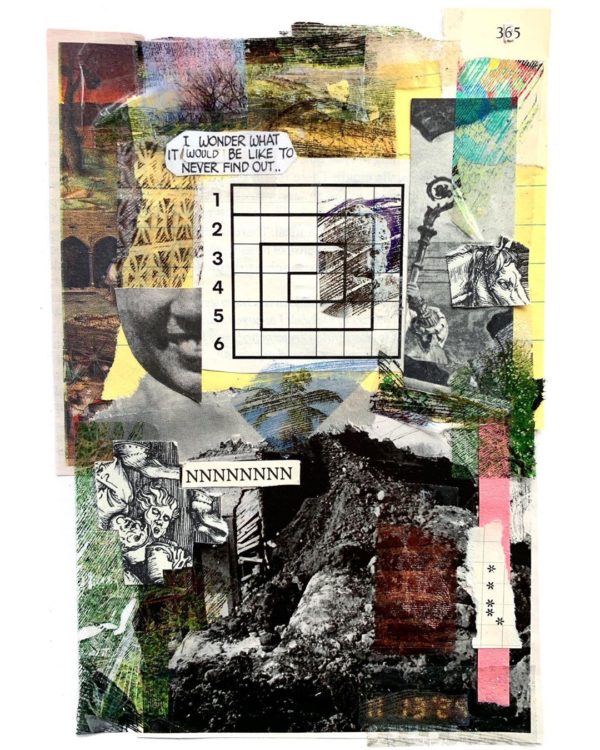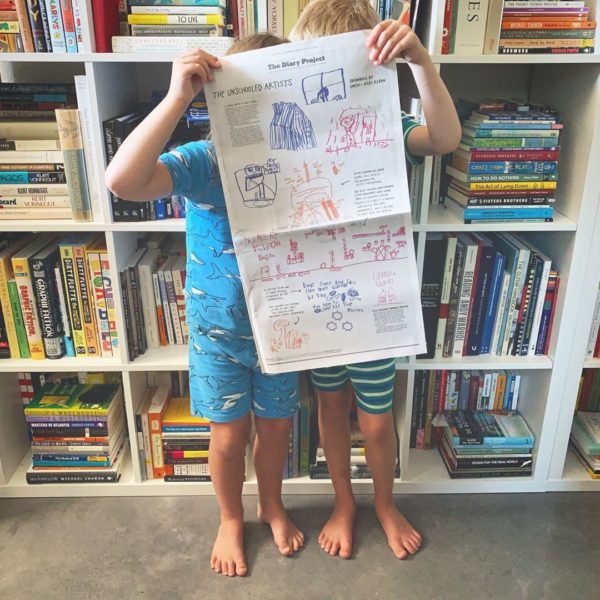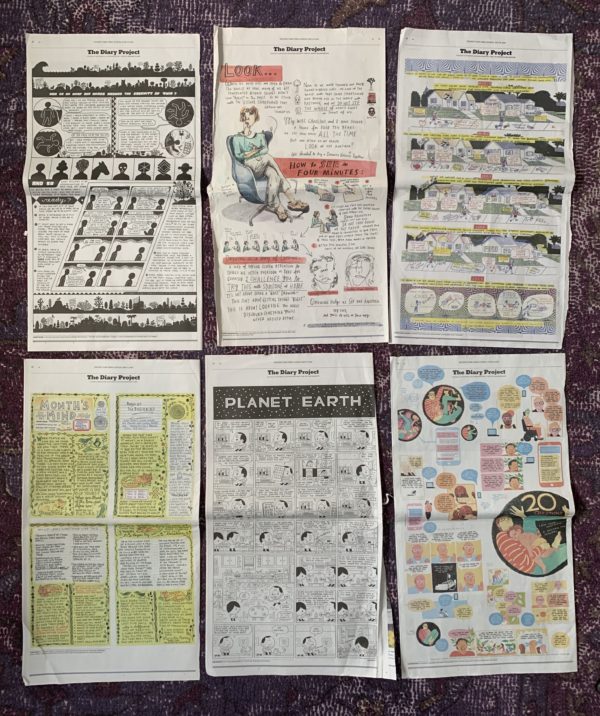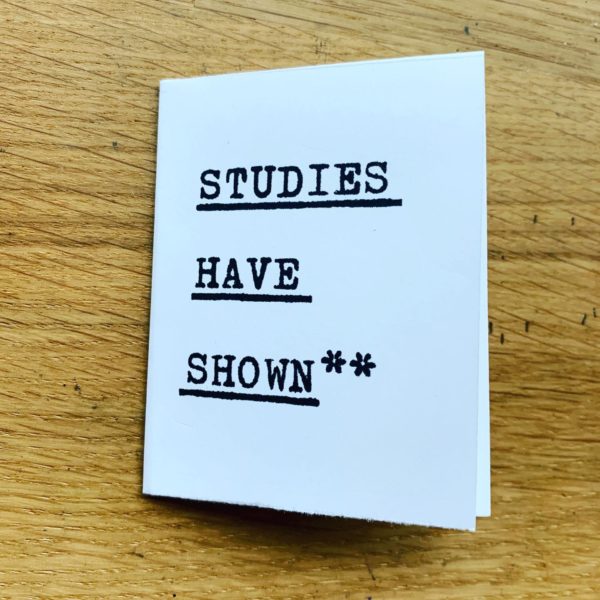
Whenever I’m reading some pop psychology book (which, granted, isn’t often) I like to underline all the various versions of “studies have shown” that appear in the text.

For this zine, I searched an ebook edition for all the appearances of “study” or “studies” and typed them out onto a single sheet of paper.
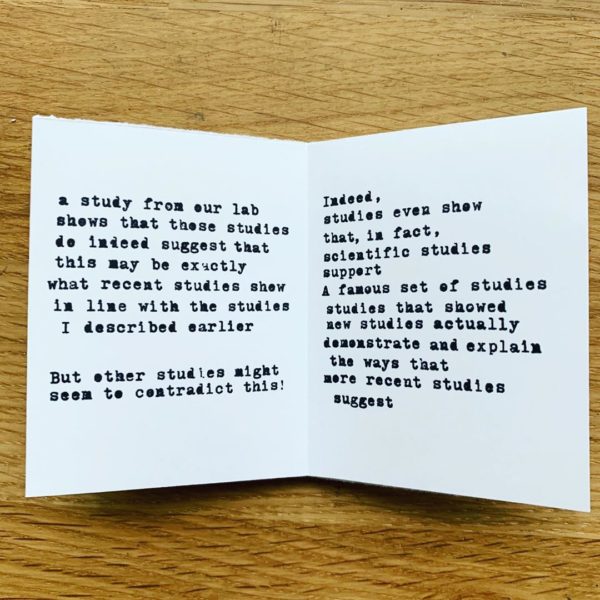
Then I chopped them up and started re-arranging them, eventually realizing you could make a kind of nonsense that was grammatically correct and said absolutely nothing.

When I got something I liked, I re-typed the whole thing again, scanned it into the computer, and laid it out in zine form. Anything for a laugh these days…
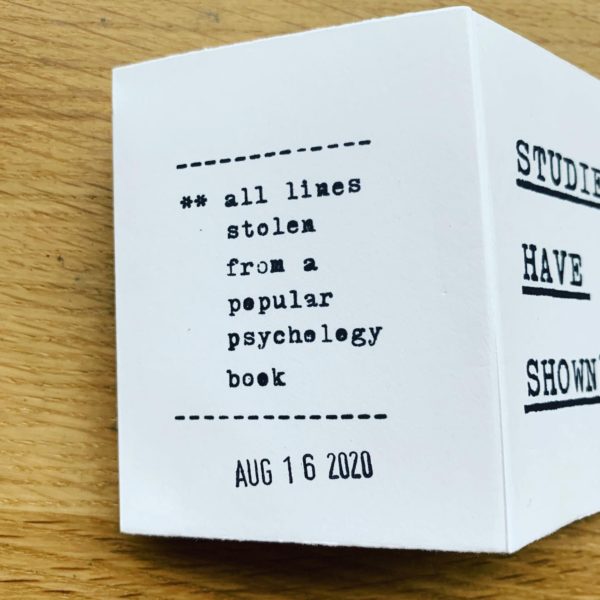
More zines here.



